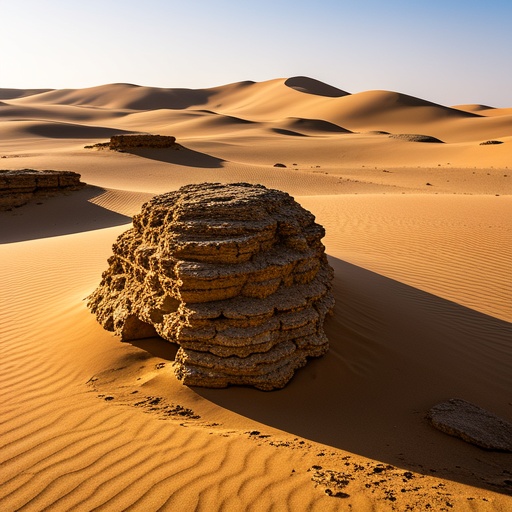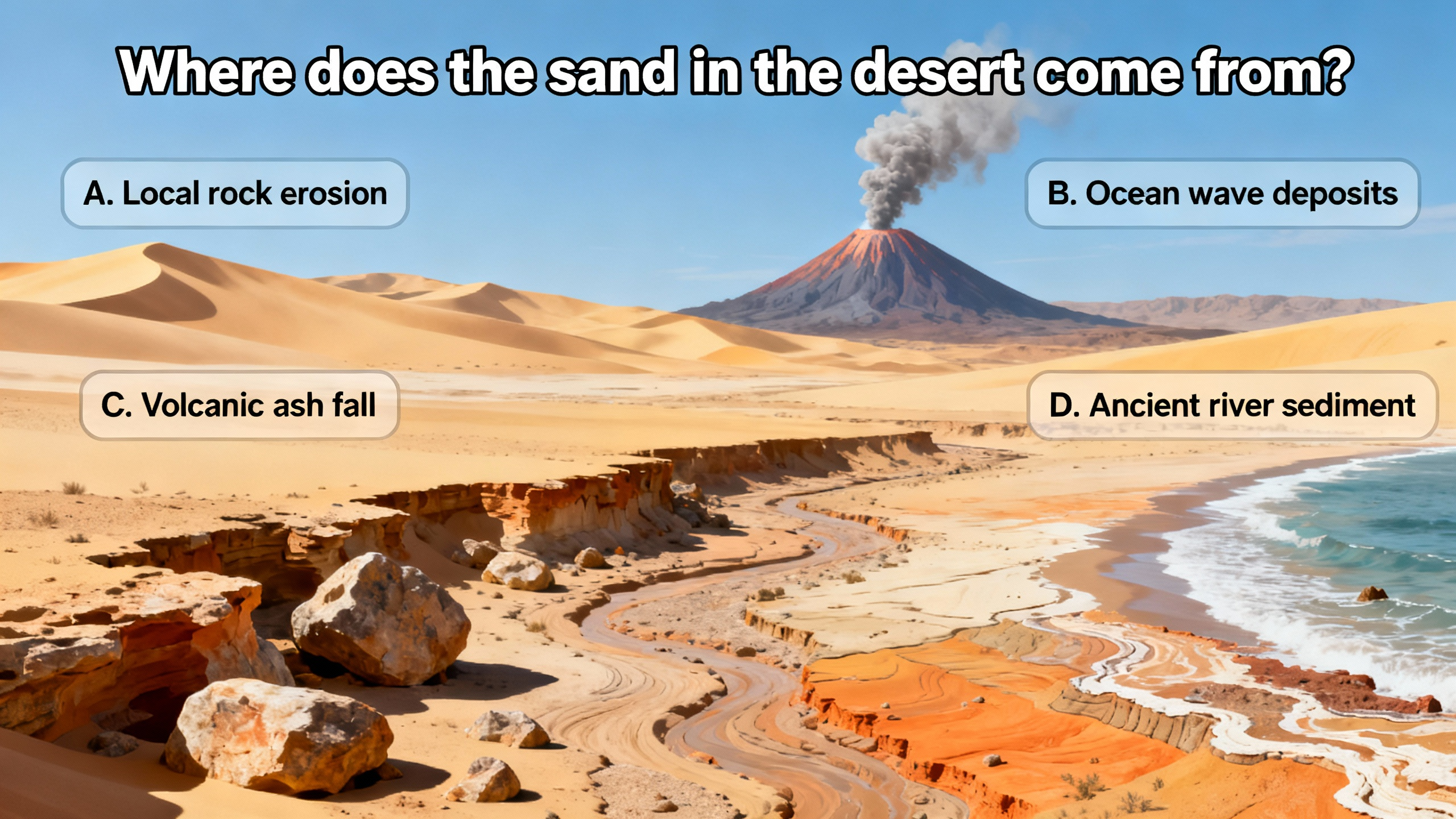Origin of Sand in Deserts
In geographical knowledge, the origin of sand in deserts is a complex process influenced by multiple factors. There are several main sources that contribute to the vast expanse of sand in these arid regions.
 Firstly, weathering and erosion play a crucial role. Over long periods, large rocks in the desert area are subjected to extreme temperature changes. During the day, the high temperatures cause the rocks to expand, while at night, the rapid cooling makes them contract. This continuous expansion and contraction create stress within the rocks, leading to cracks and eventually breaking them into smaller pieces. Additionally, wind and water also contribute to the erosion process. Wind - blown particles can gradually wear down larger rocks, and occasional flash floods can carry sediment and break rocks apart through the force of the flowing water. These broken rock fragments are further ground down into smaller grains, which eventually form sand.
Firstly, weathering and erosion play a crucial role. Over long periods, large rocks in the desert area are subjected to extreme temperature changes. During the day, the high temperatures cause the rocks to expand, while at night, the rapid cooling makes them contract. This continuous expansion and contraction create stress within the rocks, leading to cracks and eventually breaking them into smaller pieces. Additionally, wind and water also contribute to the erosion process. Wind - blown particles can gradually wear down larger rocks, and occasional flash floods can carry sediment and break rocks apart through the force of the flowing water. These broken rock fragments are further ground down into smaller grains, which eventually form sand.
 Secondly, ancient riverbeds and lakes are significant sources. In the past, many desert areas were once covered by large bodies of water. When these water sources dried up, the sediment at the bottom was exposed. The fine - grained sediment, which had been deposited over time, was left behind. With the action of wind, these sediments were picked up and redistributed, forming sand dunes. For example, the Sahara Desert has remnants of ancient river systems, and the sand in some parts can be traced back to the sediment deposited by these long - gone rivers.
Secondly, ancient riverbeds and lakes are significant sources. In the past, many desert areas were once covered by large bodies of water. When these water sources dried up, the sediment at the bottom was exposed. The fine - grained sediment, which had been deposited over time, was left behind. With the action of wind, these sediments were picked up and redistributed, forming sand dunes. For example, the Sahara Desert has remnants of ancient river systems, and the sand in some parts can be traced back to the sediment deposited by these long - gone rivers.
Finally, some sand in deserts may have been transported from distant places. Prevailing winds can carry sand particles over long distances. For instance, sand from the Sahara can be carried across the Atlantic Ocean and deposited in the Caribbean. Volcanic activity can also contribute to the sand supply. Volcanic eruptions eject large amounts of ash and rock fragments into the atmosphere. When these materials settle, they can be further broken down into sand - sized particles. In some volcanic deserts, the unique composition of the sand can be attributed to volcanic origin.
In conclusion, the sand in deserts comes from a combination of local weathering and erosion, remnants of ancient water bodies, and long - distance transportation. These processes have been occurring over millions of years, shaping the deserts as we know them today.










